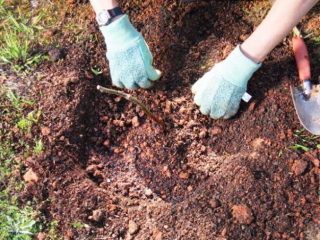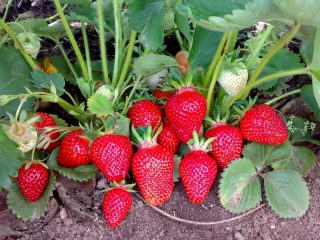Content
Knyazhenika and boneweed are perennial, low shrubs from the Rosaceae family. Many people think that this name hides the same plant. This is a misconception, since these are two different species that differ in taste, appearance, beneficial properties and place of germination. In order not to make a mistake in the forest and collect healthy berries, you need to familiarize yourself with the characteristics and look at the photos.
What is the difference between princeberry and stone fruit?
Knyazhenika and kostyanika are often confused or even thought to be the same culture. To get a clear idea of the two varieties, you need to know the place of growth, external description and differences.
Differences in appearance
Knyazhenika and stoneweed are similar only in leaves, but they are different in flowers and fruits. Differences between drupes and princes:
- In drupes, the fruit balls are easily removed from the base; in princesses, they are difficult to separate.
- The fruits of the princesses hang on the stalk, while those of the stone fruits look up.
- Drupes have small, snow-white flowers, collected in the form of a shield, while princesses have pink, solitary, apical inflorescences.
- The stems of the princess are erect, the plant does not form mustaches.Drupes have erect stems, 1.5 to 3 m long, which take root at the end of summer. Young plants become independent and develop independently the following year.
The berry of the prince and the berry are different, they can be distinguished by the description and photo.
Prince:
Stone berry:
By distribution area
The berries of drupe and princeling differ in their habitat. Knyazhenika grows in damp sphagnum forests, clearings, the outskirts of swamps, and at the edge of the forest. It can be found in the central zone of Russia, in Siberia.
Drupe grows in moist soil, in coniferous, mixed and deciduous forests, wastelands and meadows. It grows in the Far East, Siberia and the Urals.
In terms of composition and beneficial properties
There is a difference between knuckleberry and knyazhenika both in composition and in beneficial properties.
100 g of princess contains 7 g of carbohydrates, 200 mg of vitamin C, tannins, citric acid, and essential oils. Calorie content is 26.3 kcal.
The presence of vitamin C in the berry helps improve immunity, normalizes blood microcirculation, and strengthens vascular walls.
Composition of drupes:
- carbohydrates – 7.4 g;
- proteins – 0.8 g;
- fats – 0.9 g;
- vitamins C, P, E;
- minerals.
Calorie content per 100 g of product is 40 kcal.
Prince berry and stone fruit berry are not the same thing, as they have different healing properties.
Name of the berry | Beneficial features | Side effects | Contraindications |
Prince | Prevents the development of scurvy. Fights viral diseases. Improves kidney and liver function. Dried leaves disinfect and heal wounds. Eliminates excess weight. Strengthens the heart muscle. Crushed berries relieve skin allergic reactions. Lowers blood pressure. Restores the functioning of the gastrointestinal tract. | Allergic reaction. Diuresis. Increased bladder tone. | Individual intolerance. Epilepsy. Gastritis and ulcer. Hypotension. Pregnancy and lactation. Before surgery.
|
Stone berry | It has diaphoretic, analgesic, anti-inflammatory and diuretic properties. Eliminates colds. Heals blood vessels. Used in cosmetology. Strengthens the walls of blood vessels and the heart muscle. Increases blood pressure. Reduces body weight.
| Digestive disorder. Headache. Increased blood pressure.
| Allergy sufferers. Hypertensive patients. Children up to 7 months. Thrombophlebitis and varicose veins. Diabetes. Lactation. |
By value
Many people think that the knucklebone and the prince are the same thing, but they have differences not only in appearance, but also in natural values. Prince's stones are valued more than bones. It has an unusual raspberry flavor and pineapple aroma. Therefore, jams, compotes and desserts turn out aromatic and tasty. In ancient times it was very difficult to find, so it was valued and intended only for the upper classes. Today it can easily be grown in a garden plot.
Kostyanika has a sour taste, but in terms of nutritional composition it is not inferior to knyazhenika. Due to the high content of vitamins and microelements, it is used for medicinal purposes and for preparing delicious preserves.
What are the similarities between the princely and the kostyanika
Princeberry and boneberry are not the same thing, but they have similarities.
- They belong to the Rosaceae family and are related to raspberries, blackberries and cloudberries.
- They have the same foliage.
- Flowers are solitary, terminal.
- Flowering occurs in mid-May.
- Harvest from July to September.
- They prefer to grow in moist soil.
- They have medicinal properties.
- The fruits are frozen, dried, and canned for the winter.
- Frozen fruits retain nutrients for about 1 year, dried – 2 years.
- Can be consumed fresh.
The differences and similarities between drupes and princely berries can be determined from the photo.
The berry weight loss diet is designed for a period of 3 days to 2 weeks. Thanks to it, you can not only get rid of extra pounds, but also improve the condition of your skin, hair and internal organs. Popular berry diet:
- Breakfast – 100 g low-fat cottage cheese with low-percentage sour cream, 1 tbsp. berries, egg, green tea.
- Lunch – 1 tbsp. berries and 1 any fruit.
- Dinner – vegetable soup, 200 g of turkey or lean fish, vegetable salad, 250 ml of unsweetened berry compote.
- Afternoon snack – carrots with sour cream and garlic, 250 g of fresh berries.
- Dinner – berry and fruit salad with low-fat yogurt, buckwheat porridge without salt, 250 ml of berry broth.
Areas of application for princely and stone fruit berries
Due to their beneficial properties, plants are often used fresh to prepare healing medicines and delicious culinary dishes.
To preserve the healing properties, you need to know simple rules for picking berries:
- Carry out only manual collection, since mechanical devices cause great harm to the bush, the fruits receive mechanical damage, which reduces the shelf life.
- Only ripe berries should be collected, since green ones cannot ripen at home.
- When the moon is in its waxing stage, their aroma becomes more intense.
- The collection is carried out in cool weather.
- The harvested crop is immediately removed under a canopy, since berries heated by the sun's rays quickly lose their taste, aroma and beneficial properties.
From bones you can prepare:
- fruit and berry compote and jelly;
- fruit drink;
- jam and marmalade;
- juice and syrup;
- bone water with honey;
- kvass;
- jelly;
- wine, infusions and tinctures.
Knyazhenika is added to various culinary dishes:
- tiramisu;
- princely semolina pudding;
- ricotta cheesecake;
- pie;
- pies with cheese and berries;
- muffins;
- jam;
- juice and compote;
- syrup.
It also goes well with milk, ice cream, cream and alcoholic drinks. Dried leaves add aroma and unusual taste to tea and cooling drinks.
Conclusion
Knyazhenika and boneweed are natural medicines that save from many diseases. If there are no contraindications, the berries are used in cooking, for preparing preserves and for fresh consumption. When going to the forest in order not to make a mistake in choosing, you need to know the description and appearance of the berry.













